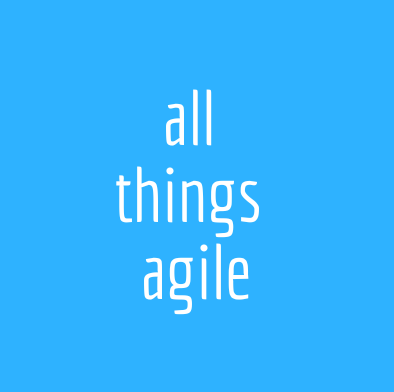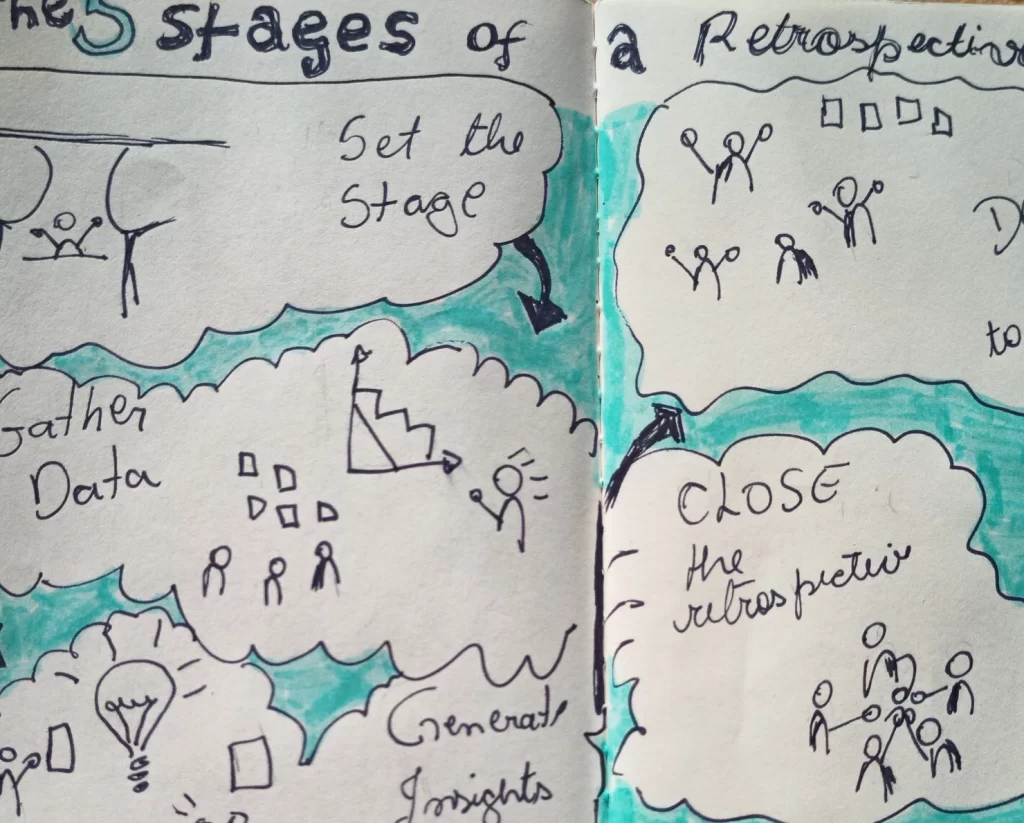Change, whether big or small, is many times conducted with that strong project-style execution, and then we forget about the most important part: the people. That happens even if we are talking about agile change.
How many times have you seen someone jump straight into starting to do Scrum, because it’s cool, because they are excited, because they are TOLD to do it… and then get frustrated that Scrum “doesn’t work for them” rather quickly.
Well, that’s where the ADKAR model comes into place, and that’s what today’s post is all about: What is ADKAR, how it can be helpful and _why not? _ let’s see ADKAR in action in a simple agile scenario, so that you understand the theory in practice.
Rather watch a video? Then click below.
Otherwise, let’s keep on reading!
What is the ADKAR model?
ADKAR, defined by PROSCI, is a goal-oriented change management model that helps individuals successfully transition through organizational change. And that’s a key point. We can think about change in many ways, but PROSCI created this holistic model to provide a framework for leaders and change agents IN ORGANIZATIONS to address the people-side of change, ultimately increasing adoption and minimizing resistance.
The 5 letters are actually an acronym, and they stand for awareness, desire, knowledge, ability and reinforcement.

So what to they mean?
- Awareness: Do people understand the WHY of this change (the problem, the goal)?
- Desire: Are they ON BOARD with the change, seeing the benefits outweigh the costs?
- Knowledge: Do they have the KNOW-HOW, the information and skills to actually work differently?
- Ability: Can they PUT IT INTO PRACTICE, actually performing in the new way consistently?
- Reinforcement: Are there systems to SUSTAIN the change, celebrate wins, and course-correct?
The 5 stages of the ADKAR model are split into two zones. One for ENABLEMENT, which means, preparing the terrain for the change to succeed, and ENGAGEMENT, where the change is then in place.
One of the things that made ADKAR so popular is the focus on simple, yet sequential phases, focused on individuals. When you use something like the ADKAR model you have a clear opportunity to define the change you want to see, including both the results to be achieved, the numbers, what the final stage looks like, but also, some anchor points for the execution steps in your change.
Why ADKAR Model?
We hear a lot about change in the context of organization, agile change even, yet more commonly we are talking about managing a project of change in traditional, even waterfall-y ways. I find that a simple change in paradigm ADKAR brings is that is keeps people at the center and blends wonderfully with agile approaches.
Here’s how:
1 – From forcing change to involving into change
ADKAR shifts the focus from simply announcing change to guiding people through it, and inviting them to be part of the change. By understanding individual needs at each stage, you can proactively address resistance and nurture a genuine desire to embrace new ways of working.
2 – ADKAR is Human-Centric
Just like agile prioritizes individuals and interactions over processes and tools, ADKAR recognizes that successful change adoption hinges on people embracing change, not just going through the motions.
3 – Troubleshooting and Iteration
ADKAR can be both a planning tool, for you to design crisp steps for change, it also acts as a diagnostic tool. If a team is struggling with some change, say a new agile practice of doing retrospectives, you can use the stages to pinpoint where the breakdown is occurring. For example, is it lack of awareness (they don’t see the value, step 1)? Is it a knowledge gap (they need more training, step 3)?
ADKAR helps you target your coaching efforts where they’re needed most.
The need for a change model like ADKAR
Now one of the main reasons why I think we can advocate for the use of ADKAR can be better understood in an example that has nothing to do with agile or organizations, but everything to do with people.
Let’s talk about food and health!
You know how certain foods rich in fat or too much sugar is bad for you, right? Yet, how many people do you know that really make a difference and stop eating those greasy burgers or sweet treats?

That, my friend, is one example of the difference between the first two stages of ADKAR. AWARENESS (knowing it’s bad for you) does not immediately translate into DESIRE (willingness to change).
If you want to see another relationship that the ADKAR model exposes, a bit more related to our reality in agile change, we usually see places hiring you as the coach or scrum master and it all starts with you arriving and immediately giving people scrum training and off, we go.
What’s the problem you are seeing here?
We’re jumping straight into KNOWLEDGE, or teaching people how to do things, the tactics, the techniques.
But we are not tapping into AWARENESS first element of the model. Why scrum? Why is it important? What is it bringing that we don’t already have or that we really want to have? And also, the second step of the model DESIRE: what’s in it for me with scrum? Why should I care?
So that’s another thing the ADKAR model helps in situating organizational change: for successful change, you CANNOT move to the next step before completing the previous one. Or else you may be simply steamrolling over people. Over their wishes, their current conditions and ability to absorb pace. Your change cannot go at a pace people and their processes cannot absorb. So, don’t move into creating hype before you bring awareness. Don’t start executing, before you are all in agreement and excited about the path forward. Etc. etc.
In laymen’s terms, you can’t rush change.
ADKAR in Action: A Scrum Adoption Story
To give more color, let’s say a development team is transitioning from a waterfall approach to Scrum. Here’s how ADKAR can guide the process:
Creating Awareness
In Awareness, people are understanding the why behind the change. What’s the problem? The goal? This isn’t about blind acceptance; it’s about giving people context and clarity. It’s a two-way street, so we’re expecting people to ask questions and share concerns.
In the scrum team: Start with a workshop explaining why Scrum is being implemented (e.g., to improve collaboration and deliver value faster). Share success stories and address any misconceptions.
Building Desire
In Desire, people are feeling motivated to support and participate in the change. Do they see the benefits outweighing the costs? This stage requires addressing concerns head-on and aligning the change with personal values.
In the scrum team: Engage the team in discussions about their pain points with the current process and how Scrum can address them. Showcase the benefits through demos or visits to teams already using Scrum successfully.
Providing Knowledge
Knowledge is having the information and skills needed to change. Think training, resources, clear expectations – not just about the ‘what’ of change, but the practical ‘how’.
In the scrum team: Provide comprehensive training on Scrum roles, events, and artifacts. Use interactive exercises, visual aids, and real-world examples to solidify understanding.
Developing Ability
Being able to implement the change successfully. This stage is about putting knowledge into practice, often requiring coaching, practice opportunities, and a safe-to-fail environment.
In the scrum team: Guide the team through their first few sprints, providing coaching and support as they put their knowledge into practice. Create a safe environment for experimentation and learning from mistakes.
Giving Reinforcement
In here we are talking mechanisms to sustain the change long-term. Think celebrating wins, providing feedback, removing obstacles, and adapting the approach based on real-world experiences.
In the scrum team: Celebrate early wins, gather feedback regularly, and address any roadblocks to ensure Scrum becomes embedded in their way of working.
Final Advice in Making ADKAR Practical
Don’t let ADKAR become just another acronym on your agile checklist. Here’s how to weave it into your everyday coaching:
- Start with Yourself: Model the ADKAR stages in your own approach to change. Are you genuinely enthusiastic about the new way of working? Do you understand the benefits and challenges? Your own mindset is contagious.
- Communication is Key: Keep communication open and transparent throughout the change process. Regularly share progress, address concerns, and actively solicit feedback from the team.
- Embrace Iterative Improvement: Just like in agile, don’t be afraid to adjust your ADKAR approach based on feedback and real-world observations. There’s no one-size-fits-all solution when it comes to people and change.
The Bottom Line
Change is hard, especially in fast-paced agile environments. The ADKAR model provides a structured yet flexible framework for guiding your team (and yourself) through the human side of transformation. It does not clash with the concepts of continuous improvement, iterative development and more.
By focusing on awareness, desire, knowledge, ability, and reinforcement, you can empower individuals to embrace change, unlock their potential, and achieve lasting agile success.
Whether you use ADKAR or not, I’d love for you to keep in mind there are still 3 things for great change management that you should understand and use in your agile change. They can literally stall or even break the change entirely. And that’s what you see in this blog post here.
If you are interested in growing your change, leadership and agile skills, other than the blog and videos, consider joining the newsletter Agile Circle. It’s totally free, and you’ll receive insights in your inbox, be invited to events and workshops in our community of practice, The LAB of All Things Agile, and get first word in discounts for our paid programs and coaching.



